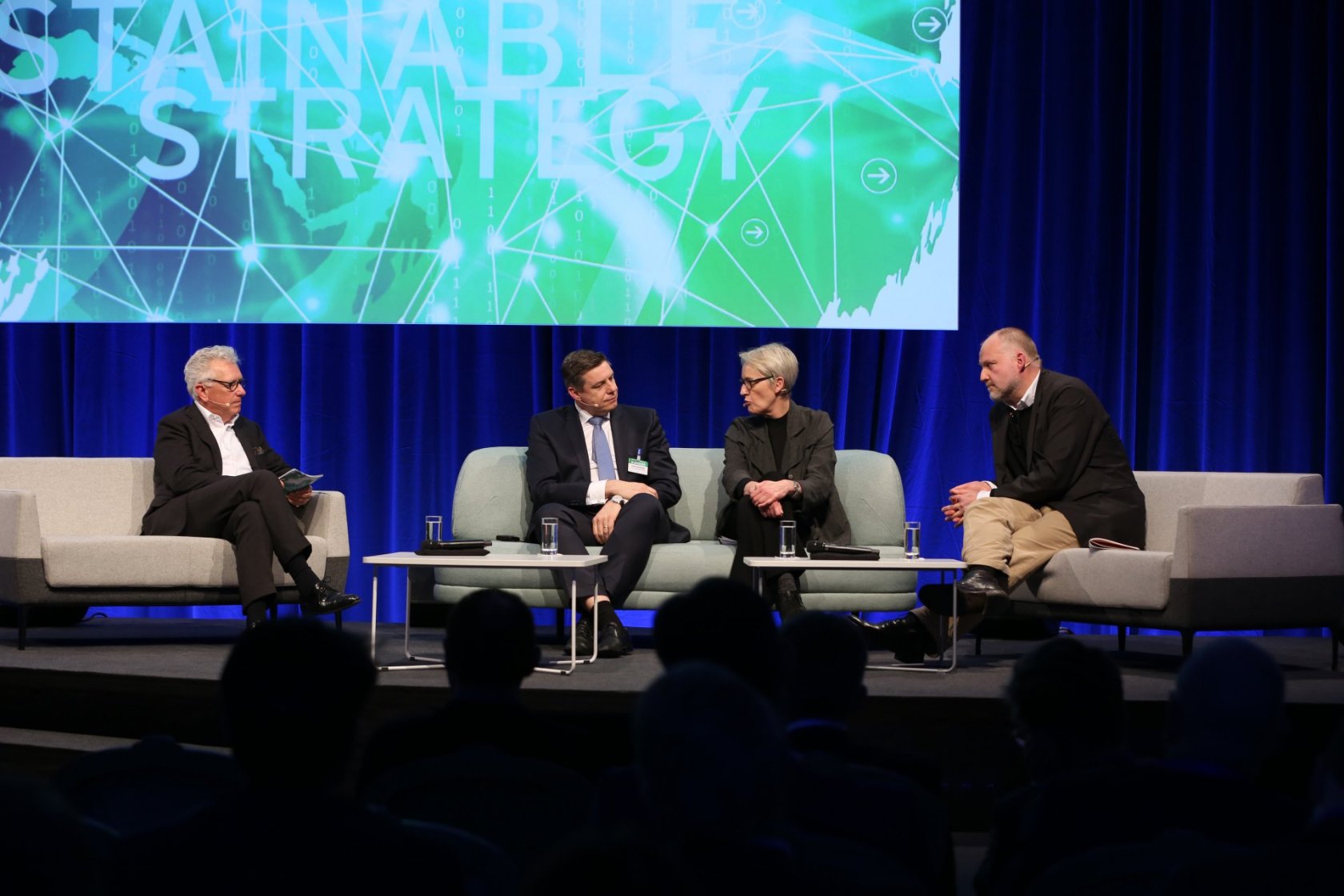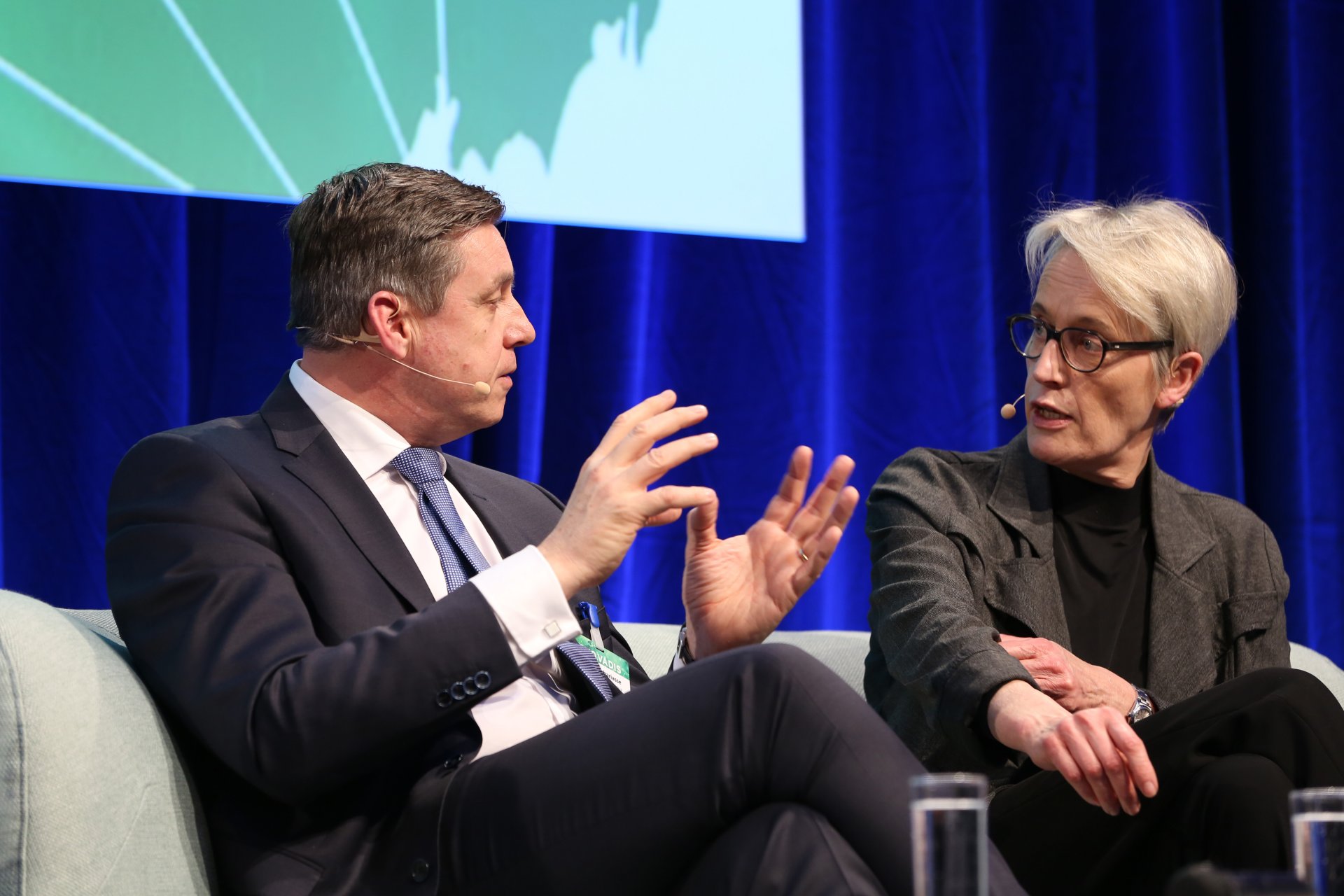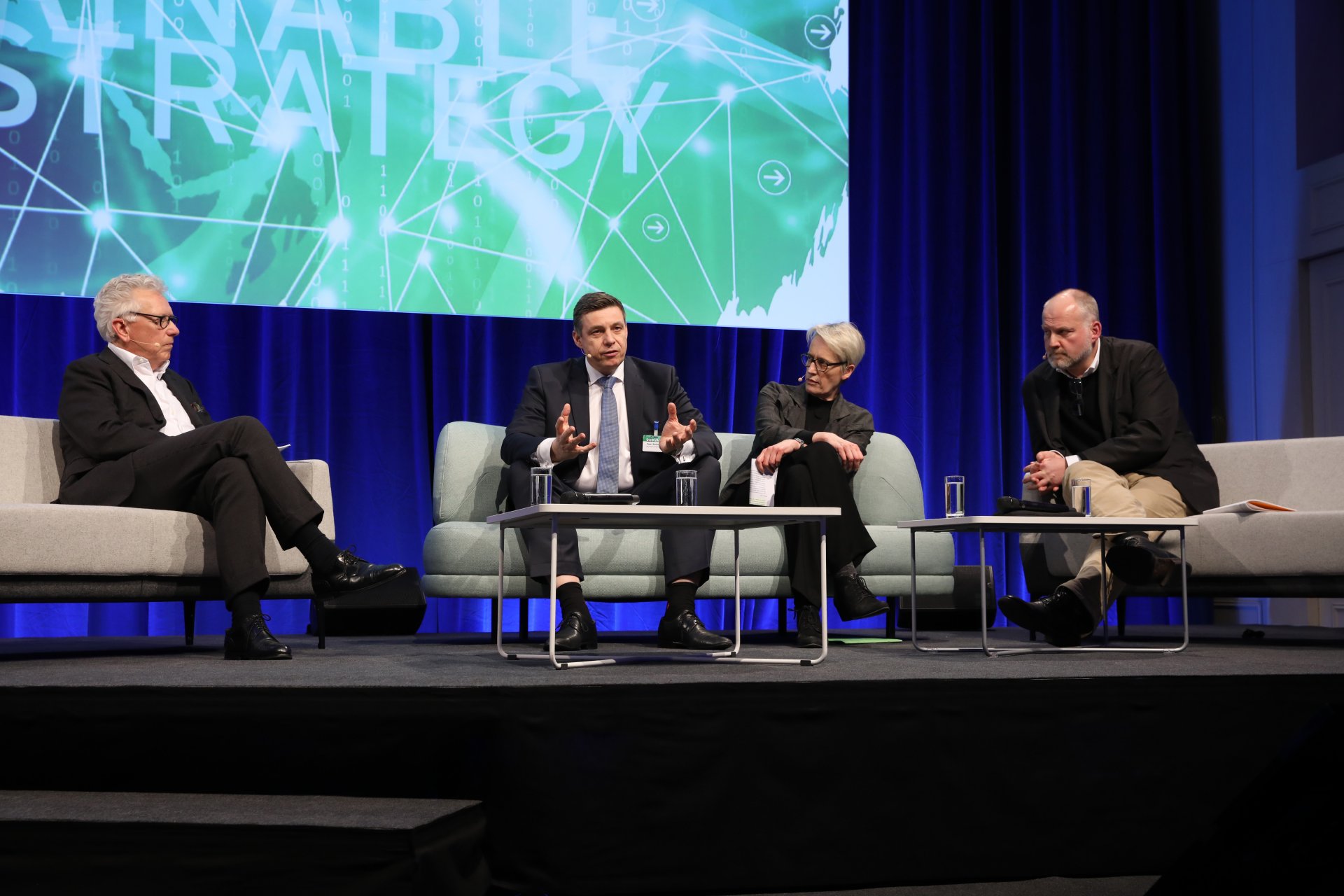

Climate change and the climate emergency declared in many cities are a clear sign that we need to change how we act. Parallel to this, a new mindset is emerging in urban planning and architecture – that of resilience. In the context of the Quo Vadis 2020 congress in Berlin, an important forum for debate and for advancing how we think, the hosts Heuer Dialog and Jürgen Engel organized a panel discussion on the topic of “High or Low Tech: Strategies for the Resilient City”. The guests included State Secretary Anne Katrin Bohle (German Federal Ministry of the Interior, Building and Community), Prof. Jochen Rabe (Professor of Urban Resilience and Digitization at the Einstein Center Digital Future (ECDF) at TU Berlin and Managing Director of the Berlin Water Competence Center (KWB), and property developer Coert Zachariasse (Delta Development). Together they addressed the question: What added value does the holistic scope of resilience have for the development of a city and its architecture? After all, one thing is certain: We need new strategies to be better able to tackle the crises of tomorrow and the central issue of how digitization can help us in the process.
“How can we treat the existing built strictures sensibly and where can we afford the luxury of new buildings?”
Jürgen Engel:
Ms. Bohle, resilience as a key word was last used in this context at the 2019 Urban Development Conference that took as its title “smart, supportive, resilient”. What was the intention behind your use of this notion?
Anne Katrin Bohle:
Behind all of this is a complex topic that actually has a pragmatic message: How can our cities become more robust in times of rapid change at very short intervals? How can we make them more viable for the future? With a view to concrete building tasks: How can we treat the existing built strictures sensibly and where can we afford the luxury of new buildings?
Jürgen Engel:
Mr. Zachariasse, you’re the expert as regards innovations for the smart city of tomorrow. How do you as a developer apply the “cradle-to-cradle” philosophy and how does it help you in realizing your projects?
Coert Zachariasse:
Developers are first and foremost entrepreneurs and as such have for many years now relied on the “Cradle to Cradle” principle, as we asked ourselves the question: How can we improve our products for users? How can we offer them value added? At the same time, we ask ourselves in economic terms how we can better invest going forwards. For me, the “Cradle-to-Cradle” approach is very meaningful, as it covers all aspects from planning through to use and can in the process create advantages for everybody.

“Contrary to what the one or other scholarly article might suggest, ‘resilient’ is not the new ‘sustainable’.”


Jürgen Engel:
And how do your buildings and districts contribute to urban resilience along the way?
Coert Zachariasse:
One example is that we can lower costs by simply reducing elaborate components or materials, something from which everyone benefits. If buildings are more flexible and enable changes more easily in the future, then they become more robust and resilient. We can revisit and improve ground plans, too, with a view to their actual use. Here, we can draw on digital processes that ideally can be combined: During planning and construction we collect a lot of information about a building, e.g., the data from BIM models. Now, if you bundle these resources and evaluate them, you can use them in the long term for intelligent urban planning as well.
Jürgen Engel:
Mr. Rabe, why did you make the topic of “resilience” part of your professorship? To put it provocatively: Is such an in-depth approach necessary if we are already concerning ourselves with sustainability?
Jochen Rabe:
Now that’s a key fundamental issue you’ve broached: Contrary to what the one or other scholarly article might suggest, “resilient” is not the new “sustainable”. Resilience brings additional factors to bear to supplement sustainability – meaning it does not change our sustainability objectives one little bit. Resilience is key to my research because it combines an understanding of things with their implementation, since we live in an age when cities are changing so swiftly that the current systems are subjected to excessive strain. So what’s needed are new strategies that cannot always be reduced to “sustainability”.
“Re-uniting development and implementation, that’s a perfect point for me as an architect to join in as we ourselves call for more experimentation when it comes to urban planning.”
Jürgen Engel:
Re-uniting development and implementation, that’s a perfect point for me as an architect to join in as we ourselves call for more experimentation when it comes to urban planning. You are also researching the digitization processes we just mentioned. What new uses do people expect of buildings owing to digitization?
Jochen Rabe:
Such digitization must always be construed on an urban scale. To that end, we need intelligent, sustainable strategies for existing building. When talking about reducing CO2 emissions, we cannot go on always focusing on new builds. Digitization can help us acquire decisive data from existing buildings. In order to enable our existing buildings to be more readily adapted we need to align their use to our needs and above all be able to change them more flexibly.
Jürgen Engel:
…no small task.
Jochen Rabe:
True. But on the urban scale we are already increasingly seeing excessive capacity utilization, meaning building usages must be able to respond more rapidly to change. At the very least, ground-floor zones should already be adapted to changes in society.
Jürgen Engel:
And what specific methods would you recommend?
Jochen Rabe:
On the one hand, by researching user behavior you can learn a lot about a city. In future we must successfully define possible changes in usage and thus plan transformation of the buildings ahead of time.


Coert Zachariasse:
You can gain a lot from such data analysis, because we do not know what tomorrow will bring – we can only try to make our buildings more adaptable. As a thoroughbred developer you can hardly create long-term value for a city. So it is helpful if the design is defined in terms of the end user and beyond. More flexibility now makes it easier to square up to an uncertain future – and create more sustainable buildings.
Jürgen Engel:
Do you also rely on your own experiences in this regard?
Coert Zachariasse:
Yes, at the moment I am noticing there’s a trend towards translating everything into euros. If we monetize everything we miss the opportunity to discern real values. How much is aesthetics worth to us, what is the value of pristine air? What was the inspiration behind a building? These are aspects whose importance we should not underestimate but which we can hardly measure in monetary terms, however precious they may be in ideal terms. You need a holistic approach in this regard.
Jürgen Engel:
Could you explain this by means of an example?
Coert Zachariasse:
Take downtown Amsterdam: It was built over 500 years ago and embodies an aesthetic of its very own, one we no longer build today but still perceive as being of great value. I ask myself whether we simply forget certain things that past generations had over us. Demolition and new builds often produce so much CO2, for example, that you often need several decades to offset the emissions by means of a smart energy concept.
“The European city with its balance of densities and centrality has hitherto proved to be very versatile.”
Jürgen Engel:
Ms. Bohle, what are our politicians doing to promote business models with a long-term thrust in line with the notion of resilience? How can legislation and the legislative procedures create better preconditions?
Anne Katrin Bohle:
I do not view the legal framework in place to date as essentially constituting an obstacle. It would be all too simple to build without heeding flora and fauna and therefore neglecting any environmental audit. The price for such action would be high. We need competent public authorities: If our building and planning departments, for example, were to be networked with the private sector then things would go more speedily. However, when it comes to the law we cannot dispense with the public sector, specifically as regards local authorities, since they are in charge of planning and also have the corresponding knowledge of the locations. Implementation requires bundling knowledge and resources, meaning financial muscle, manpower, and intelligence.
Jürgen Engel:
The European city with its balance of densities and centrality has hitherto proved to be very versatile. However, what reserves do we still have left to rely on when it comes to the growth and change phase we’ve been talking about?
Anne Katrin Bohle:
One thing is for sure: There is only finite space and land available, meaning sealing surfaces cannot be the answer. We can create different densities; that said, our cities have different preconditions: For instance, it is nigh impossible to increase densities in Munich any further. Things are different in Hamburg, where in downtown areas there is definitely more potential to increase densities. We need a particular willingness everywhere to address that potential and to apply knowledge above all to make progress on the climatic front.


“One thing is for sure: There is only finite space and land available, meaning sealing surfaces cannot be the answer. We can create different densities; that said, our cities have different preconditions.”

Jochen Rabe:
Digitization helps here, too, as problems can be represented better. If the goal is higher densities then, at some point, we will have fewer redundancies. In other words, in moments of change – and they are becoming ever more frequent and occur on an ever larger scale – our cities respond ever more slowly. Digitization offers the opportunity to highlight potentials better and in this way to tap them.
Jürgen Engel:
Are there already past successful examples, such as cities that responded at an early date to future developments?
Anne Katrin Bohle:
Stuttgart can serve as a reference point here, because over 20 years ago it recognized that over-heating was going to be a problem and responded by erecting green belts and air corridors in otherwise densely-built peripheral areas – in order to make the city more resilient.
Jürgen Engel:
And how do other cities achieve this?
Anne Katrin Bohle:
In the context of the legislative opportunities that already exist, and by bringing the intelligence innate in local authorities to bear, along with participatory processes. There are all manner of variants that enable us perhaps not to foresee the future but at least to be more flexible in planning for it. I’m convinced that the European city – albeit perhaps not that as envisaged in the Charter of Athens, but definitely that in the Charter of Leipzig and subsequent versions – will be resilient and sustainable.
Jürgen Engel:
You are talking about the European city, but aren’t we sometimes too restrictive here in Germany? The Rockefeller Foundation has set up the “100 Resilient Cities” network, and to this end all over the world cities have established an administrative desk dedicated to improving the city’s resilience. So why is it that not a single German city is among the 100?
Anne Katrin Bohle:
That’s true and may be a deficit. At the same time, I discern many very independent cities and townships here that have really taken the initiative and are really trying things out. Take Bottrop and the Innovation City, which were role models for Milan and where an entire district was successfully changed to achieve an innovation and modernization ratio that was thrice the German average. It’s a moot point whether we call this the German approach or something else – there’s no real label.

“In times of rapid change, I find it far more frightening not to change than vice versa.”

Jürgen Engel:
Mr. Zachariasse, what role do you as a businessman and developer play in actively shaping the future of our cities? How can you support our politicians in this regard?
Coert Zachariasse:
That is one of the most important tasks of political leadership. In times of rapid change, I find it far more frightening not to change than vice versa. I repeatedly find us getting into all sorts of difficulties with building regulations and the local authorities. But we talk to them and explain the steps we are taking and what possibilities there are. For us, interaction is important: What is the purpose behind certain laws and what opportunities are there for making progress? We must bring companies and politicians to the table and think holistically: What do we want to do and how will we achieve these objectives? And what new paths can we go down, what old principles should we revisit? If we square up to these questions and swap ideas on them, then we’ll reach our goal.
Jürgen Engel:
Many thanks to you all for your time and energy.

Jürgen Engel
Principal


